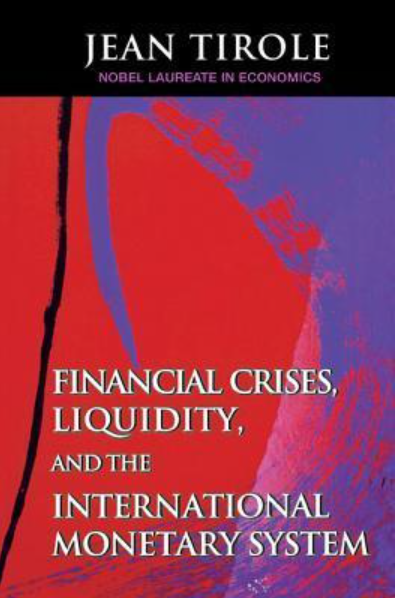Financial Crises, Liquidity, and the International Monetary System by Jean Tirole

1 Emerging Markets Crises and Policy
Responses
Many excellent books and articles have documented the
new breed of "twenty-first century" financial crises. I will
therefore content myself with a short overview of the
main developments. This chapter can be skipped by read-
ers who are familiar with Emerging Markets (EM) crises.
The pre-crisis period
No two crises are identical. At best we can identify a set
of features common to most if not all episodes. Let us
begin with a list of frequent sources of vulnerability in
recent capital-account crises.
Size and nature of capital inflows. The new breed of
crises was preceded by financial liberalization and very
large capital inflows. In particular the removal of controls
on capital outflows (the predominant form of capital
control) has led to massive and rapid inflows of capital.
Instead of inducing onshore capital to flow offshore to earn
higher returns, these removals have enhanced the appeal of
borrowing countries to foreign investors by signaling the
governments' willingness to keep the doors unlocked.
At the aggregate level, the net capital flows to devel-
oping countries exceeded $240 bn in 1996 ($265 bn if
South Korea is included), six times the number at the
beginning of the decade, and four times the peak reached
during the 1978-82 commercial lending boom. Capital
inflows represented a substantial fraction of gross
domestic product (GDP) in a number of countries: 9.4
percent for Brazil (1992-5), 25.8 percent for Chile
(1989-95), 9.3 percent in Korea (1991-5), 45.8 percent
in Malaysia (1989-95), 27.1 percent in Mexico (1989-
94) and 51.5 percent in Thailand (1988-95).
This growth in foreign investment has been accompa-
nied by a shift in its nature, a shift in lender composition,
and a shift in recipients. Before the 1980s, medium-term
loans issued by syndicates of commercial banks to sover-
eign states and public sector entities accounted for a
large share of private capital flows to developing coun-
tries, and official flows to these countries were commen-
surate with private flows.
Today private capital flows dwarf official flows. On the
recipient side, borrowing by the public sector has shrunk
Financial Crises, Liquidity, and the International Monetary System by Jean Tirole




